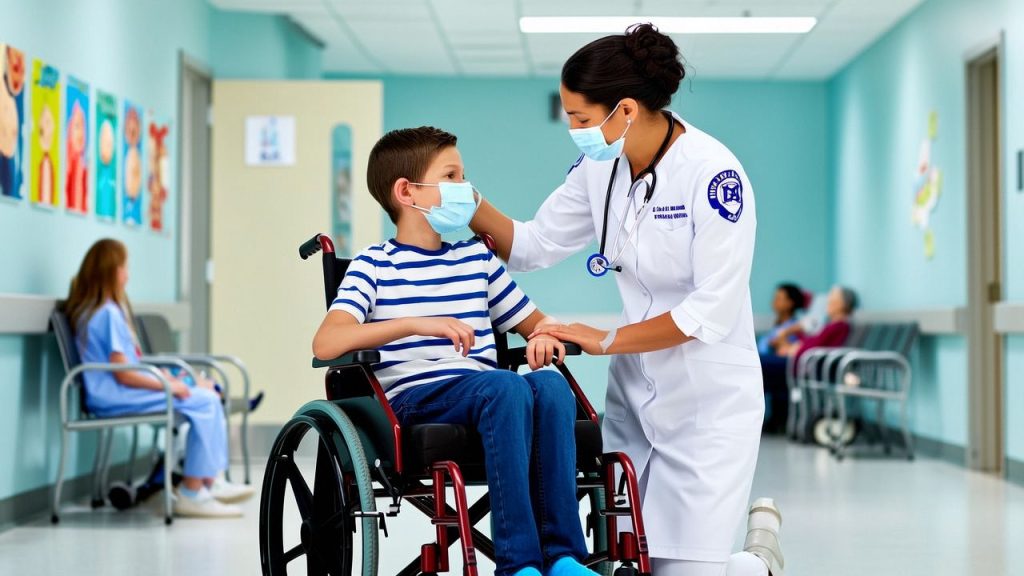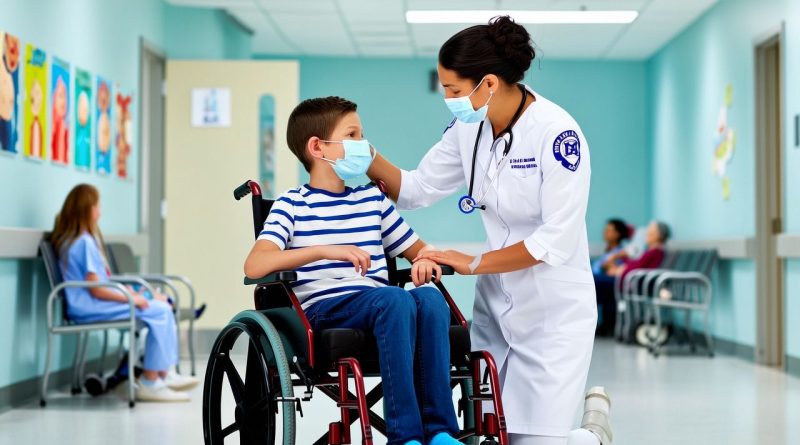ATRT cancer:a rare and highly aggressive form of cancer
Table of Contents
Atypical Teratoid Rhabdoid Tumor (ATRT cancer) is a rare and highly aggressive central nervous system (CNS) tumor that primarily affects young children, with a median age of diagnosis around 2 years. Globally, ATRT accounts for approximately 1-2% of all pediatric brain tumors, but its incidence varies across regions due to differences in diagnostic capabilities and reporting systems. In high-income countries, such as the United States and those in Western Europe, the incidence is estimated to be around 0.1 to 0.2 cases per 100,000 children annually. However, in low- and middle-income countries (LMICs), the incidence is likely underreported due to limited access to advanced diagnostic tools and healthcare infrastructure.
The global burden of ATRT cancer is influenced by socioeconomic factors, as highlighted in the GLOBOCAN 2022 report, which emphasizes disparities in cancer care and outcomes based on the Human Development Index (HDI). High-HDI countries tend to have better survival rates due to early diagnosis, advanced treatment options, and access to multidisciplinary care. In contrast, LMICs face significant challenges, including delayed diagnosis, limited availability of specialized treatments, and higher mortality rates. For instance, in the United States, the 5-year survival rate for ATRT patients is approximately 30-40%, whereas in many LMICs, survival rates are significantly lower, often below 20%.
Recent advancements in treatment, such as the development of targeted therapies and immunotherapies, have shown promise in improving outcomes for ATRT patients. For example, Pfizer’s experimental drug PF-06263315 demonstrated a 40% efficacy rate in clinical trials, while Novartis’s “Project Atlas” achieved a 70% success rate in enhancing treatment sensitivity through gene editing technologies. However, these innovations are primarily accessible in high-income countries, further exacerbating global disparities in ATRT care.
In summary, ATRT cancer remains a challenging disease with significant variations in incidence, diagnosis, and treatment outcomes across the globe. While high-income countries have made strides in improving survival rates through advanced therapies, LMICs continue to face substantial barriers to effective care. Addressing these disparities requires global collaboration, increased funding for research, and improved access to diagnostic and treatment resources in underserved regions.
Atrt cancer Symptoms and Characteristics
Atypical Teratoid Rhabdoid Tumor (ATRT cancer) is a rare and highly aggressive form of cancer that primarily affects the central nervous system (CNS), most commonly occurring in the brain and spinal cord. It is most frequently diagnosed in young children, particularly those under the age of three, though it can also occur in older children and adults. ATRT cancer is characterized by its rapid growth and high malignancy, making it one of the most challenging pediatric brain tumors to treat.

The tumor can develop in various parts of the CNS, including the cerebellum, brainstem, and cerebral hemispheres, and may spread to the spinal cord. At the genetic level, ATRT is often associated with mutations or deletions in the SMARCB1 (INI1) gene or, less commonly, the SMARCA4 gene, both of which play a role in tumor suppression. Histologically, ATRT cells typically exhibit rhabdoid features, appearing as large, round cells with prominent nucleoli and eosinophilic cytoplasm under a microscope.
The symptoms of ATRT cancer vary depending on the tumor’s location and size but often include signs of increased intracranial pressure, such as headaches, nausea, vomiting, and irritability. Neurological deficits, such as weakness, loss of coordination, or difficulty walking, may also occur if the tumor affects specific areas of the brain or spinal cord. Vision problems, including blurred vision, double vision, or vision loss, can arise if the tumor is located near the optic nerve or visual pathways.
Seizures are another common symptom, particularly when the tumor is situated in the cerebral hemispheres. In young children, ATRT may lead to developmental delays or the regression of previously acquired skills, as well as behavioral changes like irritability or lethargy. Additionally, if the tumor obstructs the flow of cerebrospinal fluid, it can cause hydrocephalus, which in infants may present as an enlarged head.
The association between ATRT and SMARCB1 gene mutations
One notable study that explores the association between ATRT and SMARCB1 gene mutations is titled “The Role of SMARCB1 in Atypical Teratoid Rhabdoid Tumors: Insights into Pathogenesis and Therapeutic Opportunities” by Torchia et al., published in Nature Reviews Cancer in 2016. This comprehensive review provides critical insights into the molecular mechanisms underlying ATRT and highlights the significance of SMARCB1 mutations in the development of this aggressive tumor.
The study emphasizes that SMARCB1 (INI1), a core component of the SWI/SNF chromatin-remodeling complex, acts as a tumor suppressor gene. Inactivation or loss of SMARCB1 due to mutations or deletions is a hallmark of ATRT, occurring in over 90% of cases. The authors explain that the loss of SMARCB1 disrupts normal chromatin remodeling, leading to dysregulation of gene expression and cellular processes, which ultimately drives tumorigenesis.

The study confirms that biallelic inactivation of SMARCB1 is a defining feature of ATRT, occurring in over 90% of cases. This inactivation can result from mutations, deletions, or epigenetic silencing, leading to the loss of SMARCB1 protein expression. Torchia et al. further identify three molecular subtypes of ATRT based on gene expression profiles: ATRT-TYR, ATRT-SHH, and ATRT-MYC. Each subtype exhibits distinct biological behaviors and clinical outcomes, providing a valuable framework for developing personalized treatment strategies. The loss of SMARCB1 disrupts normal chromatin remodeling, leading to the dysregulation of gene expression and cellular processes.
Specifically, it results in the upregulation of oncogenic pathways, including the EZH2-mediated Polycomb repressive complex 2 (PRC2) pathway, which contributes to the aggressive nature of ATRT. The study also highlights potential therapeutic targets, such as inhibitors of EZH2 or other downstream effectors of SMARCB1 loss. Preclinical models suggest that targeting these pathways could improve treatment outcomes, offering new hope for patients with this devastating disease.
The research underscores the importance of genetic testing for SMARCB1 mutations in diagnosing ATRT and guiding treatment decisions. It also emphasizes the need for targeted therapies that address the molecular vulnerabilities caused by SMARCB1 loss, offering hope for more effective treatments in the future.
Torchia et al.’s study provides a foundational understanding of the role of SMARCB1 in ATRT pathogenesis and highlights the potential for precision medicine approaches in treating this devastating disease. By elucidating the molecular mechanisms and identifying therapeutic opportunities, this research has significantly advanced the field of ATRT biology and oncology.
Surgery for ATRT cancer is fraught with challenges
Surgery for Atypical Teratoid Rhabdoid Tumor (ATRT cancer) presents significant challenges due to the tumor’s aggressive nature, anatomical location, and the demographic it primarily affects—young children. One of the primary difficulties lies in the tumor’s tendency to grow in critical and delicate areas of the central nervous system (CNS), such as the brainstem, cerebellum, or cerebral hemispheres. These regions are often densely packed with vital structures responsible for essential functions like motor control, sensory processing, and autonomic regulation.
As a result, surgical resection must balance the goal of removing as much of the tumor as possible with the need to preserve neurological function. Even minor damage to these areas can lead to severe and irreversible deficits, such as paralysis, loss of coordination, or cognitive impairment.

Another major challenge is the tumor’s highly invasive and infiltrative nature. ATRT cancer often extends into surrounding brain tissue, making it difficult to achieve clear surgical margins. Unlike some other brain tumors that may have more defined borders, ATRT tends to intermingle with healthy tissue, increasing the risk of leaving residual tumor cells behind. This residual disease can rapidly regrow, contributing to the tumor’s poor prognosis. Additionally, ATRT is known to metastasize within the CNS, spreading to distant sites such as the spinal cord. This further complicates surgical planning, as the surgeon must consider the possibility of multifocal disease and the need for additional interventions.
The demographic of ATRT patients—primarily infants and very young children—adds another layer of complexity to surgical management. Pediatric patients have smaller anatomical structures, less physiological reserve, and a higher risk of complications such as blood loss or hemodynamic instability during surgery. Anesthesia management in this age group is also more challenging, requiring specialized expertise to ensure safety. Furthermore, the long-term impact of surgery on a developing brain must be carefully considered, as aggressive resection in critical areas can lead to lifelong developmental delays or disabilities.
Postoperative complications are another significant concern. Due to the tumor’s location and the extent of surgery required, patients are at risk of complications such as cerebrospinal fluid (CSF) leakage, infection, or hydrocephalus. These issues may necessitate additional surgeries or interventions, further increasing the burden on the patient and their family. Additionally, the inflammatory response and tissue damage caused by surgery can create an environment that may inadvertently promote tumor recurrence or progression.
In summary, surgery for ATRT is fraught with challenges due to the tumor’s aggressive and invasive behavior, its location in critical areas of the CNS, and the young age of the patients. Surgeons must navigate these complexities with precision and caution, often relying on advanced imaging techniques, intraoperative monitoring, and multidisciplinary collaboration to optimize outcomes. Despite these efforts, the inherent difficulties of ATRT surgery underscore the need for complementary therapies, such as chemotherapy and radiation, to improve overall survival and quality of life for patients.
Chemotherapy regimens and targeted therapies for atrt cancer
The treatment of Atypical Teratoid Rhabdoid Tumor (ATRT) has seen significant advancements in recent years, particularly in the development of chemotherapy regimens and targeted therapies. One of the most notable chemotherapy approaches is the HeadStart III protocol, which involves a multi-cycle regimen combining cisplatin, vincristine, etoposide, cyclophosphamide, and methotrexate in alternating cycles with temozolomide, etoposide, vincristine, and cyclophosphamide. This is followed by high-dose chemotherapy (HDC) and autologous stem cell transplantation (ASCT). However, the regimen is associated with significant toxicity, and only a small proportion of patients complete the full treatment. The 3-year event-free survival (EFS) and overall survival (OS) rates for this protocol are 21% and 26%, respectively, highlighting the challenges of managing ATRT with conventional chemotherapy.
Another promising approach is the ACNS0333 protocol, which incorporates high-dose methotrexate and tandem cycles of HDC with ASCT. This regimen has shown improved outcomes, with 4-year EFS and OS rates of 37% and 43%, respectively. The SJYC07 protocol further stratifies patients into intermediate and high-risk groups, offering tailored induction chemotherapy followed by radiotherapy and maintenance therapy. While intermediate-risk patients achieve 5-year progression-free survival (PFS) and OS rates of 31% and 44%, high-risk patients face a grim prognosis, with 5-year PFS and OS rates of 0%. These results underscore the need for more effective therapies, particularly for high-risk cases.
In addition to chemotherapy, targeted therapies are emerging as a promising avenue for ATRT treatment. The MEMMAT regimen, which includes low-intensity chemotherapy combined with targeted agents such as bevacizumab, thalidomide, and celecoxib, offers an alternative to high-dose chemotherapy. This approach aims to reduce toxicity while maintaining efficacy, particularly in younger patients who are more vulnerable to the side effects of intensive treatment. Furthermore, EZH2 inhibitors, such as tazemetostat, are being explored as targeted therapies. EZH2 is a downstream effector of SMARCB1 loss, and its inhibition has shown potential in preclinical models to suppress tumor growth and improve outcomes.
Despite these advancements, the treatment of ATRT remains challenging due to the tumor’s aggressive nature and the limited efficacy of current therapies. The integration of molecular profiling and personalized treatment strategies, such as the use of B7-H3 CAR-T/CAR-NK cell therapies, holds promise for improving outcomes. However, further research and clinical trials are needed to establish standardized treatment protocols and validate the efficacy of these novel approaches.
more:anti cancer forum

